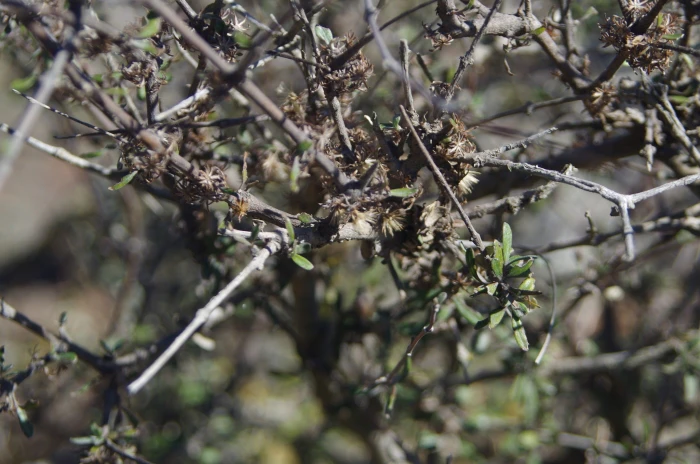Small-Leaved Tree Daisy
(Olearia adenocarpa)
Small-Leaved Tree Daisy (Olearia adenocarpa)
/
/

Ed Wilson
CC BY 4.0
Image By:
Ed Wilson
Recorded By:
Copyright:
CC BY 4.0
Copyright Notice:
Photo by: Ed Wilson | License Type: CC BY 4.0 | License URL: http://creativecommons.org/licenses/by/4.0/ | Rights Holder: Ed Wilson | Publisher: iNaturalist | Date Created: 2021-05-02T14:31:37-07:00 |
















Estimated Native Range
Climate Requirements for Maple Grove, Minnesota
| This Plant | Your Site | Plant Suitability for Your Location | ||
|---|---|---|---|---|
| • Precipitation | 26" - 32" | 30" | You should be able to grow this plant with no additional irrigation. | Excellent |
| • High Temp. | 72°F - 74°F | 84°F | Your summers may be too hot for this plant. | Too hot |
| • Low Temp. | 33°F - 36°F | 2°F | Your winter temperatures may be too cold for this plant | Too cold |
This plant may not grow well at your location - your winters are too cold.
Summary
Olearia adenocarpa, commonly known as Small-Leaved Tree Daisy, is an evergreen shrub native to the subalpine and montane zones of the South Island of New Zealand, where it thrives in tussock grasslands and rocky areas. It typically grows to a height of 3-5 feet (0.9-1.5 meters) and a similar width, with a compact and rounded habit. The Small-Leaved Tree Daisy is notable for its small, leathery leaves and its profusion of daisy-like white flowers that bloom in the summer, which are attractive to pollinators. The flowers are modest in size but can be quite showy when the plant is covered in blooms.
This plant is valued for its hardiness and low maintenance requirements, making it suitable for rock gardens, alpine plantings, and as a border shrub in gardens with poor soil. It is drought-tolerant once established, requiring minimal watering. The Small-Leaved Tree Daisy prefers well-drained soils and can tolerate a range of soil types, from clay to sandy loams. It is best situated in full sun to part shade and is frost-tolerant, making it a versatile choice for various garden settings. While generally disease-resistant, it can be susceptible to root rot if planted in poorly drained soils. It is not known for being invasive when grown outside its native range.CC BY-SA 4.0
This plant is valued for its hardiness and low maintenance requirements, making it suitable for rock gardens, alpine plantings, and as a border shrub in gardens with poor soil. It is drought-tolerant once established, requiring minimal watering. The Small-Leaved Tree Daisy prefers well-drained soils and can tolerate a range of soil types, from clay to sandy loams. It is best situated in full sun to part shade and is frost-tolerant, making it a versatile choice for various garden settings. While generally disease-resistant, it can be susceptible to root rot if planted in poorly drained soils. It is not known for being invasive when grown outside its native range.CC BY-SA 4.0
Plant Description
- Plant Type: Shrub
- Height: 3-5 feet
- Width: 3-3.4 feet
- Growth Rate: Moderate
- Flower Color: White
- Flowering Season: Summer
- Leaf Retention: Deciduous
Growth Requirements
- Sun: Full Sun, Part Shade
- Water: Low
- Drainage: Fast
Common Uses
Butterfly Garden, Fragrant, Low Maintenance
Natural Habitat
Subalpine and montane zones of the South Island of New Zealand, tussock grasslands, and rocky areas
Other Names
Common Names:
Scientific Names: Olearia adenocarpa
GBIF Accepted Name: Olearia adenocarpa Molloy & Heenan